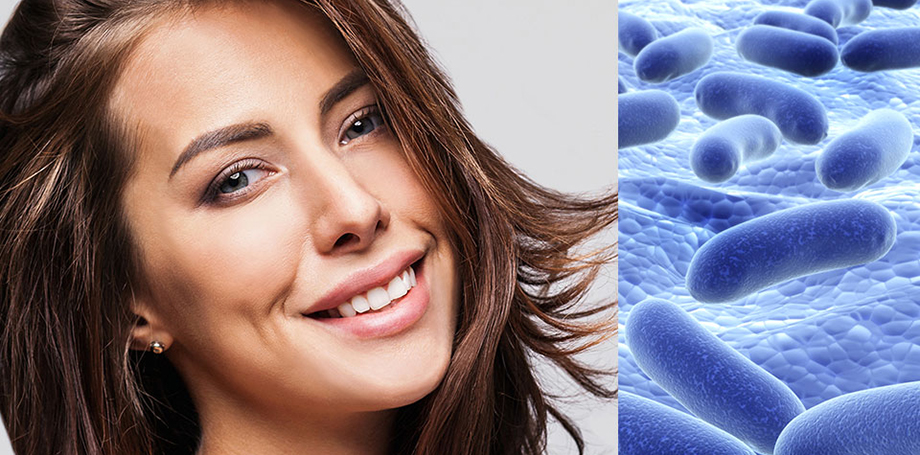The Microbiome – Part 1: A new concept for skin care
20
Feb

The symbiotic relationship between bacteria and humans has been a subject of intense discussion for many years now. Scientists have long been investigating in medical studies how the microorganisms living in and on the human body affect our health. They influence our digestion, for example, but they also influence the function and appearance of our skin, making the bacterial skin flora a subject of great interest in itself.
Many atopic skin conditions, which include acne, neurodermatitis and psoriasis, are directly linked to the symbiosis between bacterium and man. Hardly surprisingly, the skin’s microbiome and the kind of skin care that can look after it are presently one of the biggest trends in the cosmetics industry.
What is the microbiome?
All of the microorganisms inhabiting humans, on the surface and within, are referred as the microbiome. Its composition is unique to every person, which has always made it extremely difficult to study.
So far, we know that the microbiome consists predominantly of bacteria, which form a kind of shield that protects our body against environmental harm and diseases:
- On the one hand, the bacteria release molecules that strengthen the shield and regulate the pH of our skin. Thus they create an environment that ensures their own survival.
- On the other hand, they must fight their own battles in forming a stable population, given the sheer numbers of competing, undesirable microorganisms. This means the microbiome is functionally a part of our immune system. In fact, as an added benefit, our microbiome even stimulates our innate immune system and keeps it in a state of constant readiness to ward off attacks from outside.
The “Human Microbiome Project” has extensively researched the composition of the microbiome and studied how changes within it can impact health and disease. Although everyone’s microbiome is different, the project has shown that a given person’s skin is inhabited by around 10,000 different species of microorganism and that the composition of this population differs from one part of the body to another (Fig. 1). It becomes clear that the bacteria have adapted specifically to different body regions and therefore offer optimum protection where they reside (1).

What is the skin flora?
Skin flora refers to the collective of all microorganisms, such as bacteria and fungi, that form commensal or mutual communities as a natural component of the surface of healthy skin. Experts estimate there are somewhere around a trillion bacteria living on the skin at any time.
Commensals (lat. commensalis‚ table companions)
In humans, commensals are those microorganisms that permanently colonize the various microbiotopes and are known to be the normal collective flora for those regions.
Mutualism
Mutualism is a relationship between organisms of two species from which each species draws some benefit. The skin flora is a part of the microbiome and plays an essential role in protecting the skin and the organism as a whole against pathogens (2).
The skin flora consists of multitudes of different microorganisms, all living and proliferating in the various layers of the skin. We can distinguish between the following skin flora populations (3):
- Resident skin flora
The resident skin flora, or localized flora, is the population of germs that are harmless to the skin or even serve a protective function against pathogens. These germs proliferate in the stratum corneum of the epidermis. Species of resident germs include Staphylococci and Micrococci.
- Transient skin flora
The transient skin flora, or contact flora, is the population of germs that get onto the skin from the outside and are usually only present as short-term (transient) “guests” on the skin.
- Opportunistic flora
Opportunistic skin flora refers to pathogenic germs that can strictly be counted among the transient flora, but which are capable of colonizing the skin for an extended period without causing symptoms. An example is Staphylococcus aureus. The difference between opportunistic flora and transient flora is that transient pathogens generally do not actually colonize the skin. Opportunistic colonization only occurs under optimum conditions.
- Infection flora
Germs, that manage to get into an open wound and settle in, causing an infection, are grouped into the infection flora. Common species include, for example, Staphylococcus and Streptococcus.
In the second part of our series of articles regarding Microbiome we will show how the Microbiome of the skin can be positively influenced and used for cosmetic applications.
Literature:
- The Human Microbiome Project, hmpdacc.org/hmp/
- de.wikipedia.org/wiki/Hautflora
- flexikon.doccheck.com/de/Hautflora


Comments are disabled for this post.